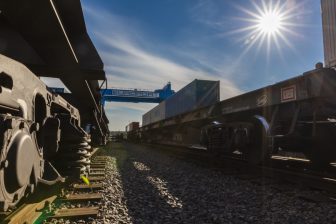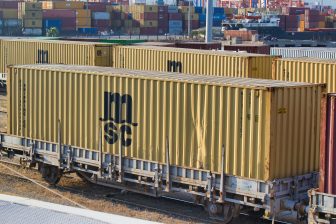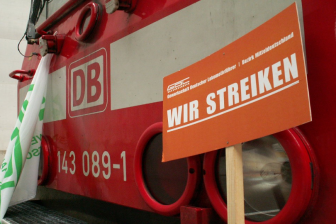
Rail – the backbone of the mobility of the future
The Third Industrial Revolution, the Digital Revolution, should make it possible for rail to increase its market share in the transport of freight. This is the key message of Jean-Pierre Loubinoux, CEO of the International Union of Railways (UIC). In his blog, he describes how rail was a crucial player during the First Industrial Revolution, but lost significance when globalisation came around the corner. Today, rail has the chance to become the backbone of the mobility of the future, he states.
BLOG – The First Industrial Revolution in the 19th century occurred as a response to a growing need for urbanisation and regional integration. Railway was a crucial player in this transformation. It had become necessary to transport quarry products such as ore and coal over large distances to support the construction of towns, factories and infrastructure. The railway itself needed steel to promote its growth, for which it was both the transporter and end-user, the actor and vector at the same time. The transport of freight was therefore the first “raison d’être” of rail.
Globalisation
Globalisation in the 20th century led to competition from the ports; sea freight was less expensive than rail freight. In response, cargo streams shifted to the ports, depriving railway of a significant portion of freight traffic, which had now become more international. Similarly, the development of road infrastructure allowed for a competitive modality of road transport: more and more, consumers goods started to be moved by truck.
As a result of these developments, freight volumes transported per rail declined despite a growing economy in the industrialised countries. The same was true for the railway market share. In Europe, approximately 2,400 billion tonne per kilometre are transported per rail annually. This represents six per cent of the European GDP, and a railway market share of 18 per cent. In order to regain its significance, railway was bound to adapt to the new, multimodal equation.
Unique railway assets
Railway’s assets in terms of capacity, regularity and compliance with environmental restrictions should allow it to become a significant vector once again in the 21st century, in serving the economy and modern society. Rail transport consumes six times less energy than transport over road, thanks to physical advantages such as the wheel-on-rail mechanism and air resistance. Such aspects translate to dramatically lower external costs for rail transport.
Railway can and must position itself today as an international logistics operator in order to regain the market share that will enable it to grow and develop. To do so, it must promote its complementarity with the other modes of transport – both road and sea – so that it can integrate with an integral logistics chain.
The management of interfaces in these new freight centres where different modes come together, is indispensable in simultaneously optimising time and cost of freight transport. The Third Industrial Revolution, the Digital Revolution, should make it possible to improve modal interoperability, management of capacities, traceability of information about freight and fluidity of transport, from door to door.
Joint action required
To encourage a modal shift towards rail and ensure rail becomes the backbone of the mobility of the future, decisive joint actions are required by railway undertakings (RUs), infrastructure managers and authorities.
RUs are working towards offering unique multimodal products. They are continuing to restructure and modernise, in order to create a competitive cost base and ensure high resource productivity. They are increasing quality, flexibility and ease of use of rail and multimodal products. And moreover, they are vigorously promoting innovation, enhancing digitalisation and deploying available technology.
In order to allow this new logistics approach to succeed, we need easier access for freight trains to the railway infrastructures, especially through the emergence of major dedicated corridors. Also, we need better technical and administrative conditions to ensure interoperability, and equal operational conditions for road and rail. Only then we can move towards an integrated, connected and international chain of mobility.
Global Rail Freight Conference
The UIC, the global railway organisation, would particularly like to invite you to Genoa from 26-28 June for the Global Rail Freight Conference (GRFC), where you can join railway and logistics experts from all over the world to continue discussing these aspects of the freight industry. For more information and registration, please visit the dedicated website.




